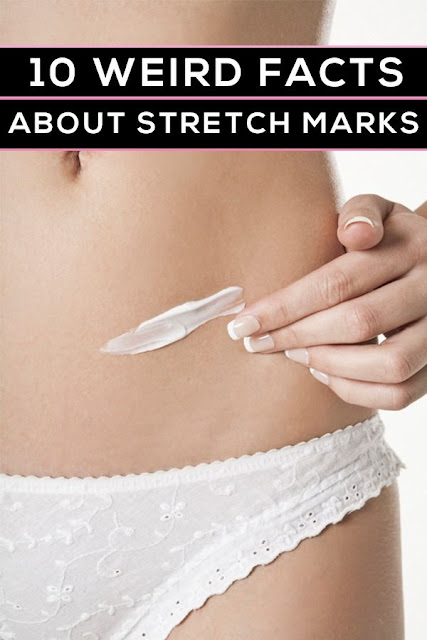While we all aim for smooth and even skin, sometimes things don’t always go our way. At one point or another, most of us will have to deal with stretch marks, so it’s best to know the facts and face them head on. Whether you’re wondering how you got them, how to help them, or even how to hide them – we’ve got you covered. Below, you will find everything you need to know when it comes to tackling stretch marks, so you’ll never have to be self conscious about them again.
1. They happen in different places for different reasons. Stretch marks occur when the dermis, the middle layer of your skin, is stretched to a point where its elasticity begins to break down. This then causes microscopic bleeding along with tissue inflammation, which gives us the raised reddish purple look of newly formed stretch marks.
2. Some people are more susceptible to them. Pregnant women, weight lifters, and adolescents are among those who are most likely to get stretch marks because of the changes their bodies go through during pregnancy, muscle growth, and puberty.
MORE: Why You Should Double-Cleanse Your Face
3. Genetics also play a big role. Stretch marks are also caused by genetics, so regardless of the circumstances, some people may just be prone to them. For this reason, you cannot completely prevent stretch marks, but they can be treated.
4. They are classified into two categories. Doctors identify stretch marks as either rubra or alba. At first, they appear as rubra, when they are pink, red, or purplish and inflamed. Over time, they turn silvery white, becoming alba.
5. Treat them early. When stretch marks reach the alba stage, they are fully mature so there is not much you can do. To reduce the appearance of new stretch marks, apply a Vitamin A oil or an over-the-counter cream with retinol once a day.
6. Try using a face cream. If you’re having trouble finding a body cream that contains retinol, opt for a face cream! While many body creams may not contain retinol, most face creams do.
MORE: An Even Score: Get the Complexion You Want
7. Look for other key ingredients. Vitamin C and peptides both stimulate collagen, so products containing them can also help reduce the appearance of stretch marks. Plus, they are safe to use during pregnancy, while retinol isn’t.
8. Self-tanner can help conceal. To make stretch marks completely vanish, there is always the option for laser treatment. However, self-tanner is a great alternative as it works wonders to camouflage stretch-marks and is also much a simpler and budget-friendly alternative.
9. Exfoliate. Since exfoliation helps remove old and worn out skin cells and replaces them with fresh new tissue, it’s also a great way to help get rid of stretch marks. For best results, practice regular exfoliation techniques using some essential oils such as tree tea oil, and a cleanser with both cleaning properties as well as an abrasive, twice a day.
10. Use massaging techniques. Not only should you just apply cream to the affected area, but you should use it to assist in massaging it as well. General massage techniques will help to break down the scar tissues that has accumulated and also increase blood circulation, which will help reduce the look of stretch marks.
Advertisement



0 comments:
Post a Comment